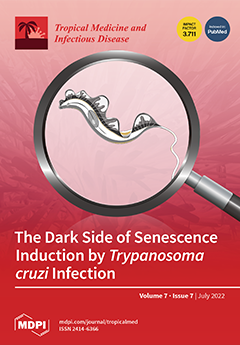Open AccessArticle
The Resistance Patterns in E. coli Isolates among Apparently Healthy Adults and Local Drivers of Antimicrobial Resistance: A Mixed-Methods Study in a Suburban Area of Nepal
by
Abha Shrestha, Rajeev Shrestha, Pramesh Koju, Sudichhya Tamrakar, Anisha Rai, Priyanka Shrestha, Surendra Kumar Madhup, Nishan Katuwal, Archana Shrestha, Akina Shrestha, Sunaina Shrestha, Sandip K.C, Supriya Kharel, Pooja Tamang, Pruthu Thekkur and Sony Shakya Shrestha
Cited by 5 | Viewed by 2693
Abstract
Evidence-based decision-making to combat antimicrobial resistance (AMR) mandates a well-built community-based surveillance system for assessing resistance patterns among commensals and pathogenic organisms. As there is no such surveillance system in Nepal, we attempted to describe the antimicrobial resistance pattern in
E. coli isolated
[...] Read more.
Evidence-based decision-making to combat antimicrobial resistance (AMR) mandates a well-built community-based surveillance system for assessing resistance patterns among commensals and pathogenic organisms. As there is no such surveillance system in Nepal, we attempted to describe the antimicrobial resistance pattern in
E. coli isolated from the fecal samples of apparently healthy individuals in Dhulikhel municipality and also explored the local drivers of AMR. We used a mixed-method design with a cross-sectional quantitative component and a descriptive qualitative component, with focus group discussion and key informant interviews as the data collection method. Fecal samples were collected from 424 individuals randomly selected for the study.
E. coli was isolated from 85.9% of human fecal samples, of which 14% were resistant to ≥3 class of antimicrobials (multidrug resistant). Of the 368 isolates, resistance to ampicillin (40.0%), tetracycline (20.7%) and cefotaxime (15.5%) were most prevalent. The major drivers of AMR were: lack of awareness of AMR, weak regulations on sales of antimicrobials, poor adherence to prescribed medications, and incomplete dosage due to financial constraints. These findings indicate the need for strict implementation of a national drug act to limit the over-the-counter sales of antimicrobials. Additionally, awareness campaigns with a multimedia mix are essential for educating people on AMR.
Full article
►▼
Show Figures






